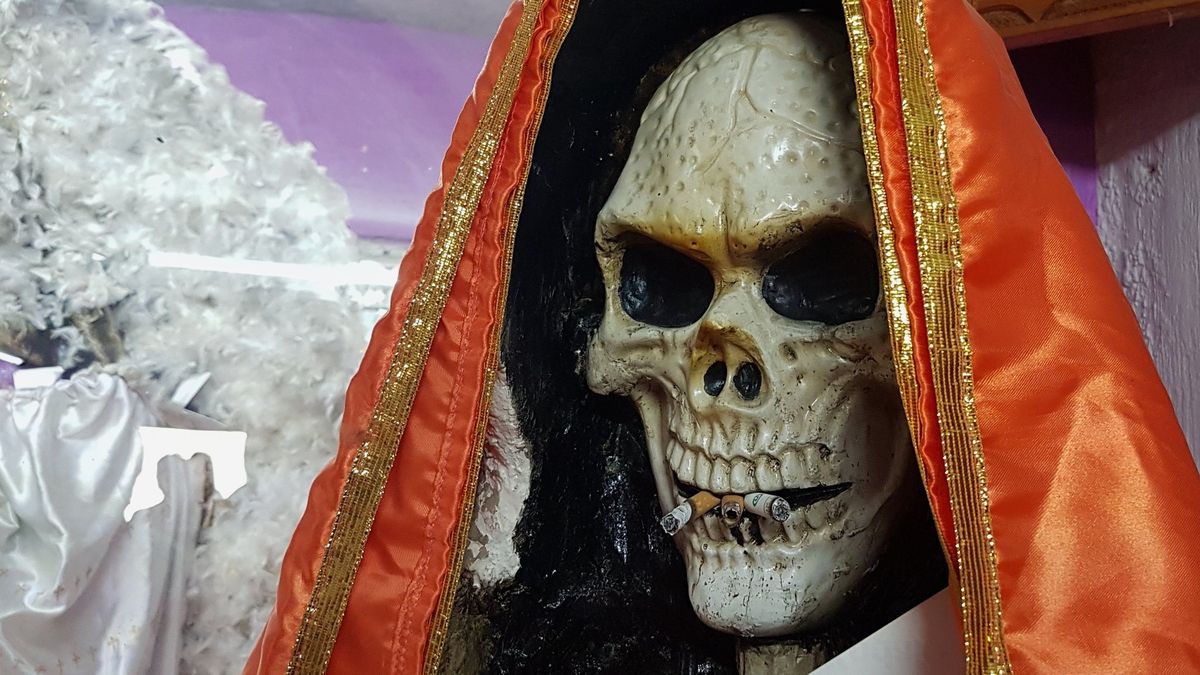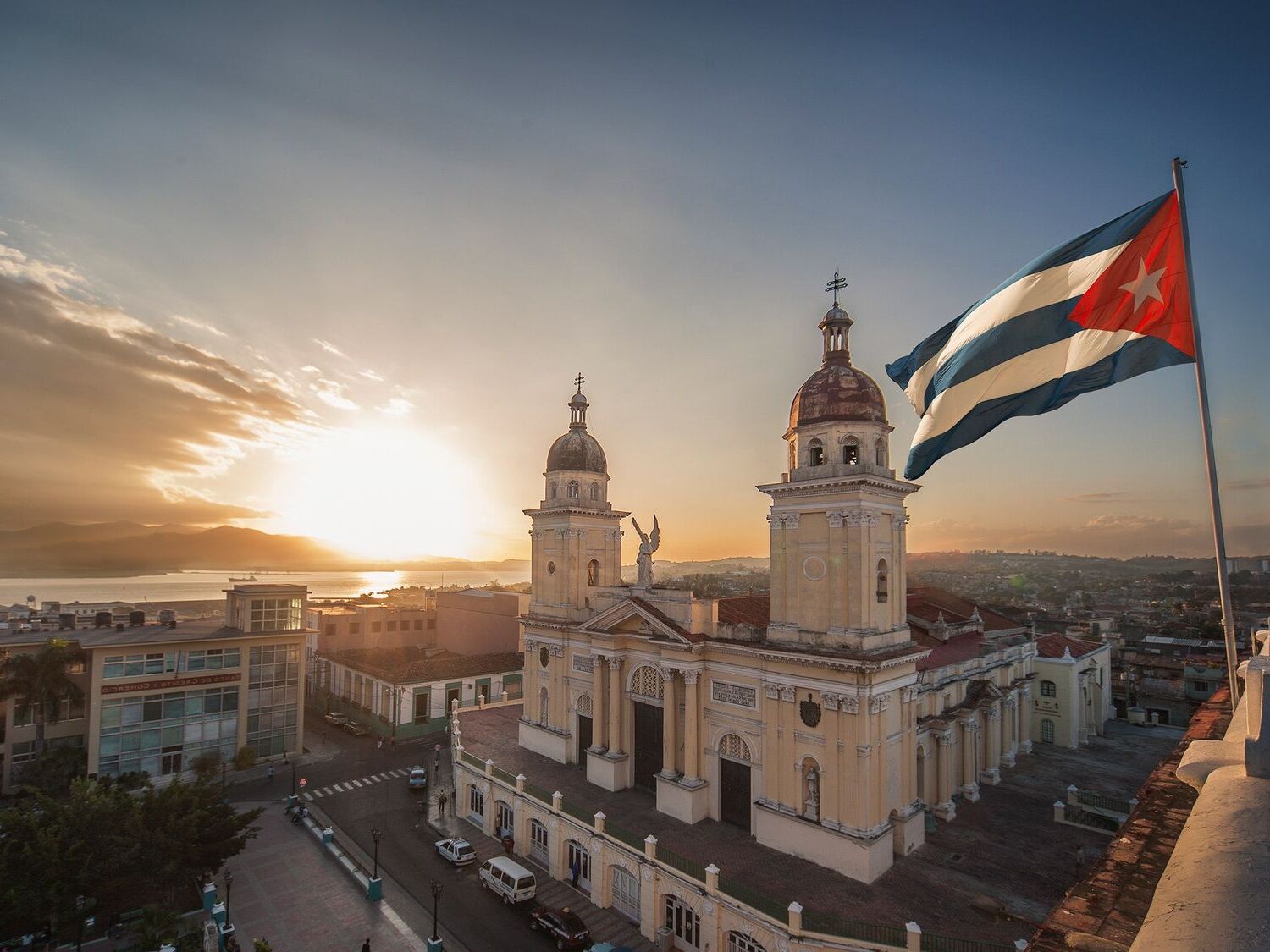
Santa Muerte, also known as Our Lady of Holy Death, is a folk saint in Mexico and parts of the United States. She is often depicted as a skeletal figure, cloaked in robes, holding a scythe and a globe. Santa Muerte has gained a significant following among those seeking protection, healing, and guidance. Her devotees come from various walks of life, including those marginalized by society. Despite controversy and opposition from the Catholic Church, her popularity continues to grow. This blog post will delve into 39 intriguing facts about Santa Muerte, shedding light on her origins, rituals, and the reasons behind her widespread appeal.
Key Takeaways:
- Santa Muerte, a folk saint from Mexico, combines Catholic and indigenous traditions, with her colorful robes symbolizing different aspects of life. She grants miracles and has left a significant mark on Mexican culture.
- Santa Muerte's influence has transcended borders, finding followers worldwide. Despite legal and social challenges, her worship continues to grow, and she is seen as a figure of social justice, standing with the oppressed and marginalized.
Origins of Santa Muerte
Santa Muerte, also known as "Saint Death," is a folk saint venerated primarily in Mexico. Her origins are shrouded in mystery and intrigue.
- Santa Muerte's roots trace back to pre-Columbian Mesoamerican beliefs, where death deities were worshipped.
- The modern image of Santa Muerte combines elements of Catholicism and indigenous traditions.
- She is often depicted as a skeletal figure, similar to the Grim Reaper, dressed in various colors symbolizing different aspects of life and death.
Symbolism and Iconography
Santa Muerte's imagery is rich with symbolism, each element carrying specific meanings for her devotees.
- The scythe she holds represents the cutting of negative energies and the inevitability of death.
- Her globe symbolizes her dominion over the earth and her ability to see all.
- The scales she sometimes carries signify justice and balance.
- Different colored robes represent various petitions: white for purity, red for love, black for protection, and so on.
Devotion and Worship
Devotees of Santa Muerte engage in various rituals and practices to honor her and seek her blessings.
- Altars dedicated to Santa Muerte are often adorned with candles, flowers, and offerings like tequila, cigarettes, and candy.
- Her followers believe she grants miracles, especially in matters of health, wealth, and protection.
- Public shrines to Santa Muerte can be found in many Mexican neighborhoods, often maintained by local communities.
- The annual Santa Muerte festival on November 1st coincides with the Day of the Dead celebrations.
Controversies and Misconceptions
Santa Muerte's veneration has sparked debates and misunderstandings, both within and outside Mexico.
- The Catholic Church condemns the worship of Santa Muerte, labeling it as blasphemous.
- Some people mistakenly associate her solely with criminal activities, although many law-abiding citizens also revere her.
- Despite controversies, her popularity continues to grow, spreading to other countries like the United States.
Cultural Impact
Santa Muerte has left a significant mark on Mexican culture and beyond, influencing various aspects of society.
- She appears in numerous songs, movies, and TV shows, reflecting her cultural significance.
- Artists often depict Santa Muerte in murals and tattoos, celebrating her as a symbol of resistance and resilience.
- Her image is used in fashion, with clothing and accessories featuring her likeness becoming popular.
Santa Muerte in Modern Times
In recent years, Santa Muerte's following has expanded, adapting to contemporary issues and needs.
- Many LGBTQ+ individuals find solace in Santa Muerte, seeing her as a protector of marginalized communities.
- She is often invoked for protection against COVID-19, with devotees praying for health and safety.
- Social media has played a role in spreading devotion to Santa Muerte, with online groups and pages dedicated to her worship.
Rituals and Offerings
Rituals and offerings are central to the practice of Santa Muerte's devotees, each with its own significance.
- Lighting candles in specific colors is a common practice to invoke her blessings for different needs.
- Offerings of food and drink are believed to nourish Santa Muerte and gain her favor.
- Some devotees perform elaborate rituals, including prayers, chants, and the burning of incense.
- Personal items like photographs or written petitions are often placed on altars to seek her intervention.
Santa Muerte's Global Reach
Santa Muerte's influence has transcended borders, finding followers in various parts of the world.
- In the United States, her veneration is particularly strong among Mexican-American communities.
- Devotees in Europe and Latin America have also embraced Santa Muerte, adapting her worship to local customs.
- Her image has been commercialized, with statues, candles, and other merchandise available worldwide.
Legal and Social Challenges
Santa Muerte's followers sometimes face legal and social challenges due to her controversial status.
- In some regions, public shrines have been dismantled by authorities, citing concerns over public safety.
- Devotees may face discrimination or stigma for their beliefs, particularly in predominantly Catholic societies.
- Despite these challenges, many continue to practice their devotion openly, advocating for religious freedom.
Santa Muerte and Social Justice
Santa Muerte is often seen as a figure of social justice, standing with the oppressed and marginalized.
- Many prisoners and their families turn to Santa Muerte for protection and hope.
- She is considered a patron of those who work in dangerous professions, like police officers and firefighters.
- Activists sometimes invoke Santa Muerte in their struggles for human rights and social change.
Personal Stories and Testimonials
Personal stories from devotees highlight the profound impact Santa Muerte has on their lives.
- Many share testimonies of miraculous healings attributed to her intervention.
- Stories of financial recovery and newfound prosperity are common among her followers.
- Devotees often speak of a deep sense of peace and protection they feel under her watchful eye.
Santa Muerte's Future
The future of Santa Muerte's veneration looks promising, with her following continuing to grow and evolve.
- Scholars predict that her worship will become more mainstream, gaining acceptance in broader society.
- New rituals and practices are likely to emerge, reflecting the changing needs of her devotees.
- Santa Muerte's influence will likely continue to spread globally, touching the lives of people from diverse backgrounds.
Final Thoughts on Santa Muerte
Santa Muerte, often misunderstood, holds a rich cultural significance. Her followers, drawn by her non-judgmental nature, find solace in her acceptance. This folk saint, with roots in Mexican tradition, symbolizes death but also protection, healing, and justice. Her image, often depicted as a skeletal figure, might seem eerie, yet it represents the cycle of life and death.
Despite controversies, Santa Muerte's popularity continues to grow. People from various backgrounds seek her blessings, showing her universal appeal. Her shrines, adorned with offerings, reflect the deep faith and devotion of her followers.
Understanding Santa Muerte requires looking beyond the surface. She embodies a blend of ancient beliefs and modern spirituality. Her story, filled with resilience and hope, resonates with many. So, next time you see her image, remember the profound impact she has on countless lives.
Frequently Asked Questions
Was this page helpful?
Our commitment to delivering trustworthy and engaging content is at the heart of what we do. Each fact on our site is contributed by real users like you, bringing a wealth of diverse insights and information. To ensure the highest standards of accuracy and reliability, our dedicated editors meticulously review each submission. This process guarantees that the facts we share are not only fascinating but also credible. Trust in our commitment to quality and authenticity as you explore and learn with us.


